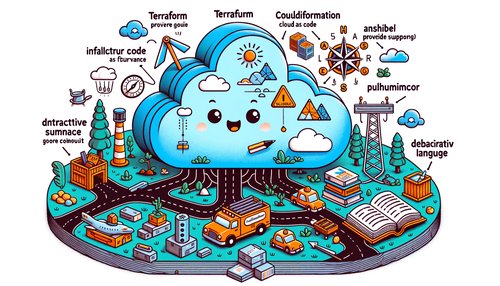Creating Reliable and Scalable Infrastructure with AWS Cloudformation Templates
The complexity of managing large-scale cloud infrastructures has become a major challenge for many organizations. AWS CloudFormation provides a way to automate the process of setting up, configuring, and managing cloud infrastructure. With CloudFormation, you can create reliable and scalable infrastructure with templates that define the resources and their relationships. In this blog post, we will discuss the benefits of using AWS CloudFormation templates and how to create them.
What are AWS CloudFormation Templates?
AWS CloudFormation templates are text files that describe the resources and their relationships in an AWS environment. They are written in a domain-specific language called CloudFormation Template Language (CFN). CloudFormation templates are used to launch, update, and delete a collection of AWS resources in an orderly and predictable fashion. They can also be used to manage multiple AWS environments in a single template.
Benefits of Using AWS CloudFormation Templates
- Easily create and manage infrastructure resources.
- Reduce the time taken to provision and deploy resources.
- Ensure consistency and reliability of resources.
- Reduce the cost of infrastructure.
- Provide a way to automate infrastructure deployment.
How to Create AWS CloudFormation Templates
Creating AWS CloudFormation templates is relatively straightforward. The first step is to define the resources that you want to create. This can be done using the CloudFormation Designer, which provides a graphical interface for creating templates. The next step is to specify the parameters for each resource, such as the type of resource, the size of the resource, and any other parameters that you want to set.
Once the resources have been defined, the next step is to define the relationships between the resources. This can be done using the CloudFormation Designer as well. Once the resources and their relationships have been defined, the template can be tested using the AWS CloudFormation service.
Once the template has been tested and is ready to be deployed, it can be uploaded to the AWS CloudFormation service. The template will then be used to create the resources and the relationships between them. After the resources have been created, they can be managed using the AWS CloudFormation console.
Example AWS CloudFormation Template
The following example is a simple AWS CloudFormation template that creates an Amazon EC2 instance and an Amazon S3 bucket. The template defines the resources, their parameters, and their relationships.
{
"AWSTemplateFormatVersion": "2010-09-09",
"Description": "AWS CloudFormation Sample Template: Create an Amazon EC2 instance and an Amazon S3 bucket.",
"Resources": {
"MyEC2Instance": {
"Type": "AWS::EC2::Instance",
"Properties": {
"ImageId": "ami-123456",
"InstanceType": "t2.micro",
"KeyName": "MyKeyPair"
}
},
"MyS3Bucket": {
"Type": "AWS::S3::Bucket",
"Properties": {
"BucketName": "my-bucket"
}
}
}
}
In this example, the resources are defined in the Resources section. The type of the resource is specified in the Type field, and the parameters for the resource are specified in the Properties field. The template also defines the relationship between the resources by specifying that the MyEC2Instance resource depends on the MyS3Bucket resource.
Conclusion
AWS CloudFormation templates are a powerful way to create and manage cloud infrastructure. They provide a way to automate the process of setting up, configuring, and managing cloud infrastructure. With CloudFormation, you can create reliable and scalable infrastructure with templates that define the resources and their relationships. In this blog post, we discussed the benefits of using AWS CloudFormation templates and how to create them.
Recent Posts

Unlocking the Power of Terraform: Mastering Conditional Expressions for Smarter Infrastructure Automation

Unveiling the Future: Navigating the Public Interface of Apache Airflow for Streamlined Workflow Management
Apache Airflow
Mastering Workflow Automation: Unconventional Apache Airflow How-To Guides for the Modern Data Enthusiast
Apache Airflow
Mastering the Cloud: Unveiling AWS CloudFormation Best Practices for Seamless Infrastructure Management


